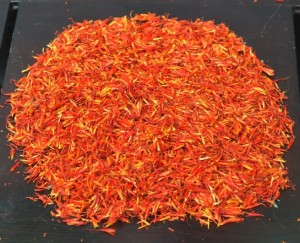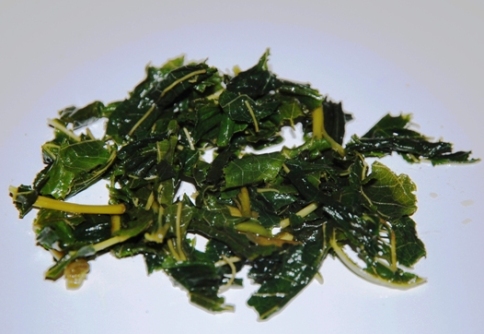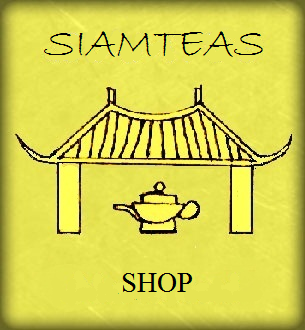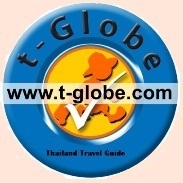Herbal Teas from Thailand
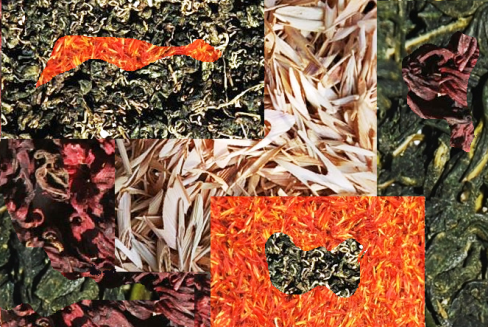
Thanks to the country’s subtropical geographic situation and climate, a broad rang of herbs looking back on a long tradition of being used as delicious infusion beverages in the form of herbal teas or as medicinal plants in the context of traditional Chinese medicine.
Jiaogulan- “Gynostemma Pentaphyllum”
The Chinese “Immortality Herb”
 click here to buy Jiaogulan tea from Thailand at Siam Tea Shop
click here to buy Jiaogulan tea from Thailand at Siam Tea Shop
Gynostemma pentaphyllum, also called Jiaogulan, is an herbaceous climbing plant that has earned itself a worldwide reputation as traditional Chinese “miracle” herb. In China, as well as in Thailand, the leaves are not only drunk as a tea, but also consumed as a food like spinach or lettuce. The inhabitants of the Chinese province of Guizhou, who drink the tea on a daily basis, have given the plant the name “immortality herb”. They suggest that their province allegedly has a higher than average life expectancy. The adaptogenic and antioxidant properties of Jiaogulan have earned the herb the designation “Southern Ginseng”, although the two plants are actually not closely related. Proven health benefits include regulating blood pressure, lowering cholesterol levels and an increase of stamina and concentration capabilities.
 In fact, has been found recently that the Jiaogulan plant grows well in European gardens, too, but with modified flavor and active properties (generally reduced), and that the imported plants lose their taste and health-benefiting properties already in the second generation.
In fact, has been found recently that the Jiaogulan plant grows well in European gardens, too, but with modified flavor and active properties (generally reduced), and that the imported plants lose their taste and health-benefiting properties already in the second generation.
In China, the first literary documentation of the medical use of the Jiaogulan herb dates back to the middle of the 19th century. Already in the 15th Century, it is described in Chinese sources as a “survival food”. The name “Immortality Herb” was given to the herb in the Chinese province of Guizhou, whose inhabitants have been consuming the leaves regularly since long and who are said to as a consequence show a higher than average life expectancy.
In Thailand, where the herb also grows naturally and is collected by the hill tribes living in the north of the country, Jiaogulan has been purposefully cultivated since the 1990s unter the umbrella intitiative of the Thai Royal Development Project, guided by the prinicipals of organic cultivation.
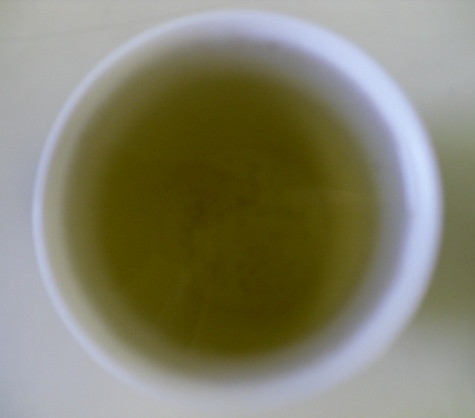 The scientific interest and research in Jiaogulan began in the 1970s in Japan and continues today, with more than amazing results. The following health benefits of Jiaogulan have so far been documented:
The scientific interest and research in Jiaogulan began in the 1970s in Japan and continues today, with more than amazing results. The following health benefits of Jiaogulan have so far been documented:
1. Control of cholesterol levels, altogether as well as in regard to the ratio between “good” cholesterol (HDL) and “bad” cholesterol (LDL).
2. Blood Pressure Control: Although it is not known exactly why this is so, Jiaogulan acts to regulate blood pressure, and, astonishingly, in a way that it increases a too low blood pressure, while having a lowering effect on high blood pressure.
3. Digestion: Jiaogulan does not only stimulate the digestion, but also actively supports the body in the utilization of nutrients, thus contributing to a reduced formation of deposits.
4. Strength and endurance: Jiaogulan has been shown to not only have a positive effect on physical strength and endurance of man, but also to increase focusing capacity and mental stamina.
5. Immune system: Jiaogulan stimulates the formation of lymphocytes, phagocytes and serum IGG in the human immune system and this way reinforces the latter in his defensive function against all types of pathogens.
6. Adaptogenic properties: Jiaogulan has a biphasic effect on brain functions, causing an energizing or calming of the system as required. Similarly, Jiaogulan has also a balancing effect on hormonal processes.
7. Antioxidant properties: There is now a broad basis of scientific evidence for the effectiveness of Jiaogulan against the formation of free radicals and thus its preventive properties against cancer.
8. Even a “wash out” effect in terms of weight loss and a detoxifying effect in the same context is mentioned in a variety of sources.
The above list is indeed impressive. Of course, it cannot be rightly claimed that Jiaogulan will cure cancer or even AIDS, but it has been shown to impede the formation of cancer cells and also evidently stimulates the human immune response.
Then there are the great taste properties of Jiaogulan tea. Relevant Internet sources contain extensive praise of “sweetness” of the Jiaogulan herb, and there are people, for which Jiaogulan is the ne plus ultra of positive taste experience.
 For sources substantiating and even extend the above stated list of health properties of the Jiaogulan herb, I could attach an endless list of URLs here, but instead I recommend to simply google “Jiaogulan”. This way, you will find such an abandon wealth of publications on Jiaogulan, descriptions, praise, scientific and semi-scientific articles, Wikipedia articles, etc. The remarkable thing is that you will find no negative publications about Jiaogulan! Just give it a try! Simply google: Jiaogulan.
For sources substantiating and even extend the above stated list of health properties of the Jiaogulan herb, I could attach an endless list of URLs here, but instead I recommend to simply google “Jiaogulan”. This way, you will find such an abandon wealth of publications on Jiaogulan, descriptions, praise, scientific and semi-scientific articles, Wikipedia articles, etc. The remarkable thing is that you will find no negative publications about Jiaogulan! Just give it a try! Simply google: Jiaogulan.
Saflor/Safflower Tea
(also: Fake Saffron)
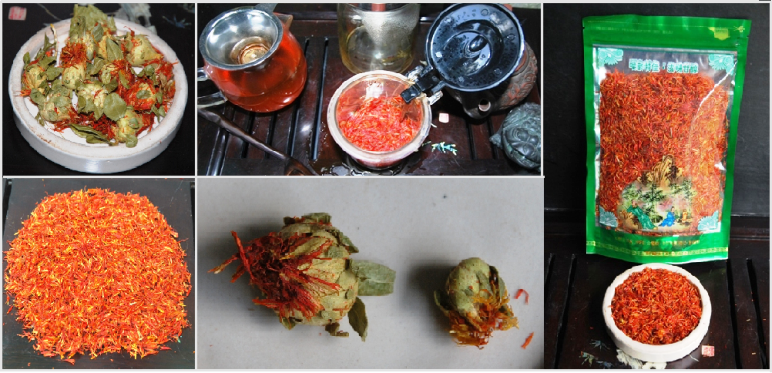 click here to buy Safflower tea from Thailand at Siam Tea Shop
click here to buy Safflower tea from Thailand at Siam Tea Shop
General:
Safflower, also called false saffron, is a plant belonging to the Aster family. Its natural area of occurrence extends across the countries of Asia and Europe, as well as North America and Australia. Safflower is a fast growing, thistle-like, year-long herbaceous plant that grows to a height of between 60cm and 1.30m.
History:
In Egypt, safflower (English: Safflower) was already used to dye fabrics around 3500 BC. The oil gained from the seeds was used in the antiquity for the manufacturing of ointments. In the 13th century, the Romans brought the safflower to Central Europe, where the flowers were used for coloring foods, but also for medicinal purposes. About the beginning of the 20th century, the plant was almost completely replaced as a dye color donor by synthetic agents. Since the end of the 20th Century, the oil obtained from safflower enjoys increasing popularity as a cooking oil, due to its high content of polyunsaturated linoleic acid and vitamin E.
Modern non-medicinal use:
- The petals are, due to their colors (the red coloring agent carthamin and the yellow coloring agent Carthamidin) are often referred to as “saffron-substitute”. While the visual effect can hardly be distinguished from that of genuine saffron, the safflower, in contrast to the aromatic saffron, as a food additive is nearly tasteless.
- The plant is used as an ornamental garden plant and as cut or dried flower.
- The flower-leaves yield a very tasty tea with a fruity-sweet flavor.
Medical use of safflower tea:
- Safflower is well known in the Asian, especially the Chinese traditional medicine, where the petals are infused as a tea. Clinical studies have shown effects on leukemia, hepatitis and migraines, besides other conditions.
- The safflower flowers have a stimulating effect on the heart and circulation. They also possess antipyretic and analgesic features, and they are said to have aphrodisiac properties. In Thailand, in this context, a tea called “Love Potion No. 1” is offered, whose main component are the flowers of the safflower.
Green Mulberry Leaves Tea
(Cha Raksa Thai)
Since ancient times, Mulberry leaves have been playing an essential role in the silk production, since they serve the silk worm moth as a preferred nutrition. In this context, the Mulberry tree was also brought to Europe in the 19th century and made native in many European countries.
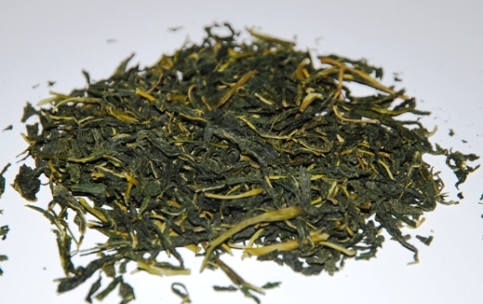 buy Mulberry Leaves Tea at Siam Tea Shop
buy Mulberry Leaves Tea at Siam Tea Shop
In Thailand and China, the leaves of the Mulberry tree look back on a long traditon of being used as a dietary supplement and medicinal herb. This is due to to their high content of specific minerals (e.g. calcium, potassium, sodium, magnesium, iron, zinc..), vitamins (e.g. A, B1, B2, C) and tradce elements. Alleged health benefits include blood pressure control, Cholesterine level control, blood sugar control, and thereby preventive features in regard to heart heart attacks.
For us, however, as non-medical professionals and tea lovers, Mulberry leaves tea is first of all a delicious herbal infusion beverage that can be enjoyed either hot or cold as a refreshing ice tea. 100% green Mulberry leaves tea has a pleasantly decent taste, with a dominant grassy-veggie note, complemented by a subtle nutty aroma. Mulberry leaves tea has no caffeine and is therefore also perfectly suitable as an evening tea.
Roselle Hibiscus
Hibiscus Subdariffa
Roselle Hibiscus Blossom tea consists of the calyxes of the Hibiscus Sabdariffa plant, from the Hibiscus flower family. The plant is today purposefully cultivativated in an many tropical and subtropical regions. Once, its fibers offer a good replacement for jute, and second, the bright read calyxes due to their good taste and pleasant sour are perfectly suitable as an ingredient for various foods or tea blends, or in their pure form as the basis for a delicious hot or chilled beverage.
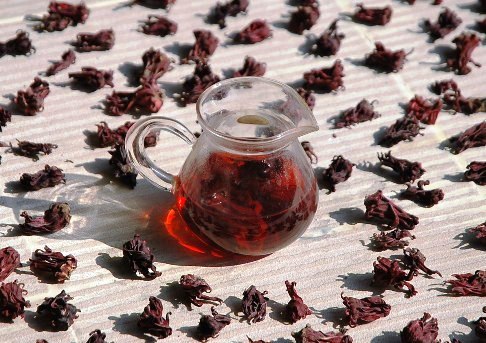 buy Roselle Hibiscus blossoms at Siam Tea Shop
buy Roselle Hibiscus blossoms at Siam Tea Shop
Roselle Hibiscus Blossoms have a refreshing effect and stimulate the senses. The plant is tradionally used in the folk medicines of a range of countries, among them Mexiko, Africa, India and Thailand. In this regard, the plant is said to have some positive health effects, such as lowering cholesterol levels and controlling high blood pressure. Other possible health benefits of the plant are being researched.
effect and stimulate the senses. The plant is tradionally used in the folk medicines of a range of countries, among them Mexiko, Africa, India and Thailand. In this regard, the plant is said to have some positive health effects, such as lowering cholesterol levels and controlling high blood pressure. Other possible health benefits of the plant are being researched.
Primarily, however, we recommend to enjoy Roselle Hibiscus Blossom tea for its refreshing citrus and rosehip-like taste, optionally as a hot beverage or as a chilled refreshment drink. The infusion has a wonderful, sated bright red color, though this leaving not residues on your tea dishes after rinsing with clear water. Roselle Hibiscus can be prepared and enjoyed either as a hot beverage or as ice tea.
for preparation instructions for Roselle Hibiscus blossoms hot or ice tea click here
Thai Lemongras Tea
Lemongrass is a grassy plant from the Cympogon family that is native to many tropical and subtropical regions of the earth, among these many Asian countries. Due to the plant’s refreshing citrus aroma and taste, it is widely used as a spice for certain dishes in Asian cuisine. Oil is made from the plant and used as a natural pesticide and/or insect repellent.
The consumption of lemongrass in its pure form as an infusion is particularly known from some African, but also Asian countries, such as Thailand. Due to its unique and refreshing citrus aroma, lemongrass also serves as a popular ingredient to a large variety of tea blends (see also Thai Lemongrass/ Black Tea Blend).
In folk medicin, lemongrass tea is also used for medicinal purposes due to the relaxing, digestive, detoxifiying, diuretic, antibacterial, antifunghal, and antioxidant properties attributed to the herb. The dephts of its taste, where the fine herbal citrus-freshness unfolds on a basis of ripe grain, make Thai Lemongrass tea best suited for the enjoyment both as hot or cold beverage.
for preparation instructions of Thai Lemongras as hot or cold tea beverage click here


